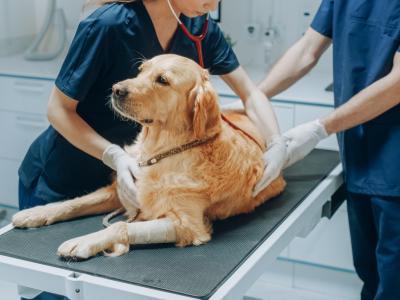Apr 5, 2006 (CIDRAP News) – Growing evidence of H5N1 avian influenza in cats suggests they may play a role in spreading the virus, signaling a need for new precautions, according to a team of medical and veterinary researchers from the Netherlands and Italy.
"Cats could be more than a dead-end host for H5N1 virus," says a commentary article published today in Nature. The authors are Thijs Kuiken, Ron Fouchier, Guus Rimmelzwaan, and Albert Osterhaus of Erasmus Medical Centre in Rotterdam and Peter Roeder of the United Nations Food and Agriculture Organization in Rome.
They call for efforts to protect cats from the virus and to test those with possible exposure to it—recommendations that are not included in existing official guidelines for controlling avian flu.
Infections in cats were first observed in Thailand in early 2004, the article notes. In one case, 14 cats in a household near Bangkok died of the infection. In addition, tigers and leopards in two Thai zoos died after eating infected chicken carcasses.
The researchers point to several other observations indicating that cats "are more than collateral damage in avian flu's deadly global spread and may play a greater role in the epidemiology of the virus than previously thought."
Fatal infections in cats have become common in Indonesia, Thailand, and Iraq, where the virus is endemic in poultry, they write. Veterinarians in both Indonesia and Iraq have reported a high incidence of sudden death in cats during poultry outbreaks of avian flu.
In addition, dead or sick cats infected with H5N1 virus turned up in Germany soon after the virus was detected in wild birds there, the researchers note.
They also note that experiments at Erasmus Medical Centre have shown that cats can be infected with the virus by respiratory and gastrointestinal routes and by contact with other infected cats. The infected cats all excreted the virus from the nose, throat, and rectum. It is unknown how long cats can shed the virus or whether they can spread it to humans, poultry, or other species, the article says.
Nonetheless, the researchers write that cats "may provide the virus with an opportunity to adapt to efficient transmission within and among mammalian species, including humans, thereby increasing the risk of a human influenza pandemic."
Therefore, despite the uncertainties, official guidelines for controlling the spread of avian flu should consider the potential role of cats, the authors say.
"In areas where H5N1 virus has been detected in either poultry or wild birds, we recommend taking steps to prevent contact between cats and infected birds or their droppings, and to quarantine and test cats suspected of such contacts, or cats showing clinical signs suggestive of H5N1 influenza," the article states. That means keeping cats indoors where possible.
They also say that other carnivores, such as dogs, foxes, members of the weasel family, and seals, may be susceptible to the H5N1 virus. Therefore they recommend testing for the virus if unusual illness or death rates occur in such animals in areas where avian flu is endemic.



















